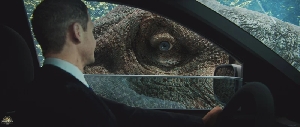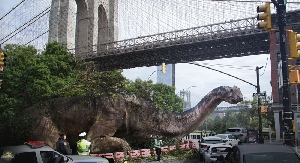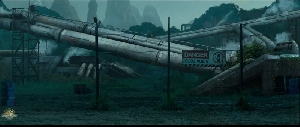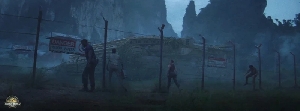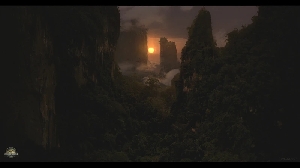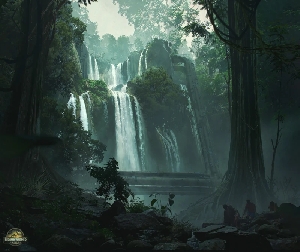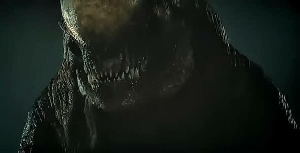Top 10 Longest Theropods - Update
Dinosaurs Forum Topic

Gigadino
MemberCompsognathusDec 7, 20145403 Views22 RepliesAfter my update Top 10 Largest Theropods list, it's time to update my Top 10 Longest Theropods list. I'll use precise estimate this time, but most of the differences in this list are meaningless, due to intraspecific variations. I won't explain my estimates, pretty much everything has been explained in the other list. But if you think that something is wrong, tell me what your thoughts are in the comments.
About Spinosaurus' weight...we've discussed enough about that, so please don't comment about Spinosaurus's weight.
#1. Spinosaurus aegyptiacus

12-15 m / 6000-7000 kg
#2. Mapusaurus rosae

10-13.3 m / 3000-8000 kg
#3. Giganotosaurus carolinii

12.4-13.2 m / 7000-8000 kg
#4. Carcharodontosaurus saharicus

11-12.6 m / 3000-7500 kg
#5. Tyrannosaurus rex

10-12.3 m / 6000-8000 kg
#6. Tyrannotitan chubutensis

11.4-12.2 m / 5000-7000 kg
#7. Siats meekorum

12 m + / 4000 kg +
#8. Acrocanthosaurus atokensis

11-12 m / 5000-6000 kg
#9. Chilantaisaurus tashuokuoensis

11-12 m / 3000-5500 kg
#10. Suchomimus tenerensis

11-12 m / 3000-5000 kg
Replies to Top 10 Longest Theropods - Update
Hey Guest, want to add your say?

Pretty accurate list, but why the heck is Suchomimus depicted in a snowy environment?
There is no such thing as a pure predator. A meat-eater is eit

Nice list and I have to say these pictures are absolutely amazing!!!
That's how I depict dinosaurs, beautiful and majestic!!! Not boringly roaming around eating all the time and fighting.
IT'S TIME TO DU-DU-DU-DU-DUEL!!!

GIGADINO - I actually really like this list a great deal! I greatly enjoy the more "obscure" animals you've included to flesh out your points - a fact that has prompted me to do a little research into the creatures with which I'm not familiar! Very excellent! Thank you for sharing this with us! :)

I'm glad you liked my list, but I'm Gigadino ;)
About Suchomimus, how do you know that, where Suchomimus lived, it was always hot and sunny?

GIGADINO - Oh, I know! I realized my error as soon as I posted my response! I'm so bloody mortified! Please forgive my oversight. :(


I find it highly unlikely Suchomimus lived in a snowy environment (not impossible), the Mesozoic was probably much hotter than today meaning that there were no glaciers. Also Suchomimus lived in Africa which was still in the equator during the mesozoic, even during the last Ice Age Africa was still pretty damn humid and hot. Though I did read an article about a Middle Cretaceous Ice Age, though it was just an article. Even if there was a Middle Cretaceous Ice Age Africa would still be humid.
There is no such thing as a pure predator. A meat-eater is eit

1. There is no Middle Cretaceous
2. It can snow in Africa: http://goafrica.about.com/b/2013/12/13/does-it-snow-in-africa.htm
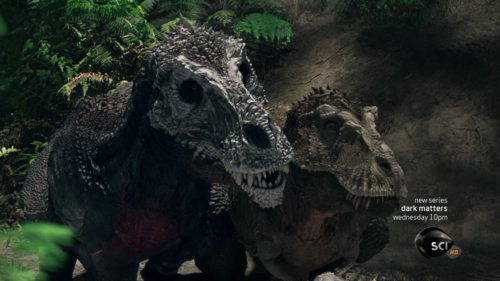
In terms of accuracy, this list is bang-on. I love to extrapolate as much as the next guy, but science deals with facts, and this is pure science.
And that T.rex drawing? Were those artists brilliant to start with or had an epiphany?! T.rex with the muzzle of a bulldog and the look of a falcon or owl?! My mind os blown from AWSOMENESS!!!!
The hippo skin on the 2 angry Spinosaurus would get that reaction too, but the T.rex illustration is too amazing!!!

Explain why this list is a bang-on.
Yes, that T.rex is absolutely amazing! This guy made it:
http://thobewill.deviantart.com/

I know there is no Middle Cretaceous, I'm refering too the Albian and Cenomanian periods, a lot of Paleontologists use the term Middle Cretaceous for those too. What are we supposed to say? The late early Cretaceous? Or the early late Cretaceous? Also, I never said that it never snowed in Africa, there is snow on top of high peaks there. Though I doubt there was much snow if any in Middle Cretaceous Africa.
There is no such thing as a pure predator. A meat-eater is eit

Yes, early late Cretaceous is fine.
Well, where that Suchomimus is it may has just snowed.

It appears that Suchomimus lived close to the equator so I seriously doubt there was ever that much snow there. Also, saying "early late Cretaceous" is to complicated so thats why I say 'Middle Cretaceous".
There is no such thing as a pure predator. A meat-eater is eit

I agree that Spinosaurus is number 1. Length is tough to peg for these animals, so I'd say this is certainly one way to look at it. I don't agree 100 percent, but these guys are certainly among the longest of the theropods. Pretty good overall :)


Nature doesn't deceive us; it is we who deceive ourselves.

The 12 meter Siats is based on the fact that the specimen we have isn't fully grown and was around 9 meters in length. 12 meters is the typical estimate for an adult animal...
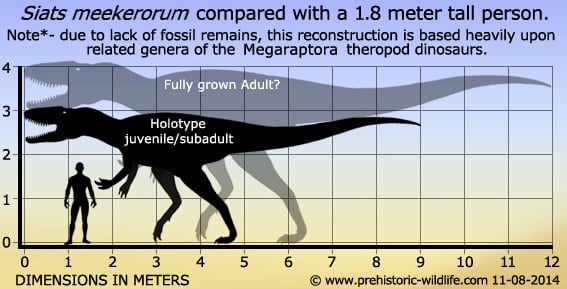


Well, 9 m for Siats is kinda low. The specimen we've got is most likely 11-12 m, Look:
http://carnivoraforum.com/single/?p=8583421&t=9990949

I have the a paper on S. meekerorum that i just found...I'll post info and a link..
"Holotype. FMNH (Field Museum of Natural History) PR
2716, partial postcranial skeleton of immature individual
including portions of the axial column, pelvic girdle and hind
limb (Fig. 1). Immaturity of the holotype is evident from lack of
neurocentral fusion across the axial series except in distal
caudals. Select measurements are provided in Table 1.
Referred specimen. FMNH PR 3059, a mid-caudal neural
arch and chevron, a pedal phalanx and several indeterminate
bone fragments."
Diagnosis. Large-bodied allosauroid exhibiting craniocaudally
expanded centrodiapophyseal laminae yet lacking welldeveloped
infradiapophyseal fossae on proximal caudals*
(autapomorphy) (Fig. 2i); craniocaudal elongation of
craniodorsal centra (Fig. 2a); abbreviated, transversely broad
neural spines on dorsal vertebrae (neural spine height B50%
maximum height of centrum) (Fig. 2d,e); transversely
flattened, axially concave ventral surface yielding subtriangular
cross-section on distal caudal vertebrae (autapomorphy)
(Fig. 2j,k); transversely concave acetabular rim of iliac
pubic peduncle (autapomorphy) (Fig. 3a); truncated
lateral brevis shelf with notched caudal end (autapomorphy)
(Fig. 3a); brevis fossa with subparallel mediolateral margins;
supraacetabular crest truncated above midpoint of acetabular
rim (Fig. 3a).
* it's a neovenatorid based on what we have of that branch..
incoming measurements in milimeters(mm)
Ilium Max. preserved length 835
Fibula Max. preserved length 461
Now, in contrast the Fibula of N. salerii was 618 mm
http://fossilworks.org/bridge.pl?a=taxonInfo&taxon_no=64120
Cannot find the ilium length on Neovenator, but yeah.
Contrasting this, the 1st and 5th caudal vertebrate are correspondingly larger then those of N. salerri; as Gigadino pointed out.
"..Phylogenetic analysis. We recover Siats as a carcharodontosaurian
allosaurian (Fig. 4) based largely on the extent and
nature of pneumatic features, which include pleurocoels on dorsal
and likely also on sacral vertebral centra, and honeycombed or
‘camellate’ interior pneumaticity, as well as alariform morphology
of dorsal hyposphens and peg and socket ilio-ischial articulation.
The presence of tab-like lateral extensions on the dorsal
postzygapophyses (Fig. 2e) and externally piercing pneumaticity
of the prezygapophyses (Fig. 2b), prominent centrodiapophyseal
laminae on caudal neural arches (Fig. 2h), and presence of a
preacetabular cuppedicus shelf (Fig. 3a) posit Siats as a member
of the subclade Neovenatoridae. A placement within the subclade
Megaraptora is supported by pronounced centrodiapophyseal
laminae bracketed by deep infradiapophyseal fossa on the caudal
neural arches (Fig. 3h), which we interpret as homologous with
the condition observed in Aerosteon26 and Megaraptor25. A
Bremer support value of 45 indicates strong support for a
monophyletic Neovenatoridae including Siats (Fig. 4b). Siats
remains labile within Megaraptora, largely due to lack of skeletal
overlap between select taxa.."
http://www.nature.com/ncomms/2013/131122/ncomms3827/full/ncomms3827.html?wt.ec_id=ncomms-20131127(pdf download)
S. meekerorum FMNH PR 2716(catalogue #) 3,917(kg) FL 1,166(mm)
3,917kg translates to 8,8635.51lbs or ~ 4.3 tons( just so everyone knows)
If isometry with A. atokensis is correct, This immature specimen would measure ~10.8 meters
Juvenile? certainly not.
Subadult? looks like it; besides, the paper didn't actually make that claim of it being a juvenile, that was only repeated by media outlets.
Fun fact, this makes S. meekerorum the third largest theropod taxon in North America that we know of. Seeing we have othing on Carcharodontosauridae growth rates, i find it implausible(impractical) to state anything much more then 12 meters, especially if it was a subadult.
Nature doesn't deceive us; it is we who deceive ourselves.

I love the llist agree with everything, go spino!
Also those pictures are epic! Love the "art" style to them. And I know I dont like feathers, spino like taht etc. however these look amazing!

Are you an avid Jurassic World fan looking for a dedicated online community of likeminded fans? Look no further! Create your own profile today and take part in our forums and gain XP points for all the content you post!


